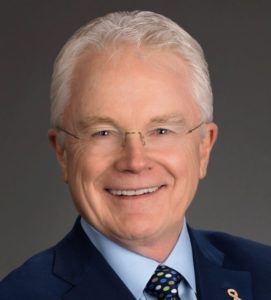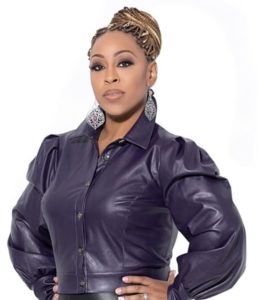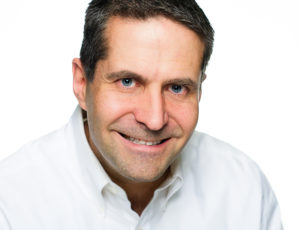As a professional speaker, your presentation needs to be unforgettable if you want to leave a lasting impression on your audience. If your presentation falls flat, then your expertise and insights may as well fall on deaf ears.
But what does it take to make sure your presentation is unforgettable? How can you leave your audience feeling like they’ve seen something incredible?
We talked to eleven professional speakers about the most important factors in every great keynote presentation.
Here’s what they had to say.
11 Ways to Make Your Keynote Presentation Memorable
1. Channel Your Nervousness into Positivity
According to Andrea Johnston, Owner of Human Dynamics Training, you need to channel your inevitable nervousness into something positive.

“Even seasoned professionals can get nervous sometimes,” says Andrea. “But there’s nothing more off-putting for audience members than visibly seeing a presenter who’s uncomfortable to be on stage. Find your balance by taking some deep breaths and reminding yourself how and why your message is going to inspire your audience. Make it about them and then take those last few nerves and transition them into being excited–it’ll add some ‘oomph’ to your delivery!”
2. Invoke Curiosity from the Outset
In order to make your presentation engaging and memorable, you need to set the tone from your very first words, says Mary Ann Faremouth, CEO, Consultant, and Author of Revolutionary Reinvention and Revolutionary Recruiting Workbook.

“The beginning of a presentation should pose a question that invokes curiosity, pondering, and possibility,” explains Mary Ann. “You want your audience to think about ‘what if’ as you offer a journey to the question at hand. Be armed with facts and information as well as wonderment. Motivate with encouragement as you nudge them with inspiration, examples, short stories, and humor. Placing a nice bow at the end with a slice of laughter will make you and your talk memorable long after everyone has left the building.”
3. Remember, It’s Not Just a Talk—It’s an Experience
Your keynote presentation isn’t just a “talk,” so don’t treat it as such. It should be an experience, explains Lois Barth, Human Development Expert, Motivational Empowerment Speaker, Coach, and Author.

“Always remember that your audience wants an experience,” says Lois. “That’s why well-told stories have meaningful engagement, light-hearted humor, and poignant moments. We must evoke feelings of connection as they are important catalysts for your audience being moved and, out of that, having an experience. Yes, you need to deliver substantive content—that’s a given—but it’s the experience that your event planner, bureau, and the audience are after; especially during this time of COVID.”
She elaborates, “There are so many ways to create an experience, and each of these models works, but it’s the intention of the speaker that makes all the difference. Get clear about how you want your audience to feel, think, and act, not only during your presentation but after”
So how do you do this?
Lois shares, “A quick tip: ask yourself while planning, ‘how do I want my audience to feel, think, and act?’ Hopeful? Confident? Motivated to move into action? Then work backward and make sure that every piece of your program is moving them to that goal. When you’re a speaker, you’re in the ‘experience’ business!”
4. Build from Your Best Section
As a speaker, you’ve probably given your presentation repeatedly, meaning you have an understanding of its most impactful points. According to Kate O’Neill, Founder of KO Insights, author of Tech Humanist and other books, and professional speaker on the human impact of a tech-driven future, you can use this point to your advantage.

“We all have a bit in our talk that we know works,” explains Kate. “A bit where we’ve seen the audience laugh or gasp—or gasp and then laugh—and the Tweets that follow. My own version has been quoted back to me months later. Start from that section and build into it, build forward from it, make it even better, punchier, and more tweet-able. If you have slides, make sure they amplify the impact. I’ve found new examples to add to my best segment to expand it and anchor it. Now it even includes an attempted Fred MacMurray impersonation.”
5. Keep It About the Audience (Not Yourself!)
One common pitfall for professional speakers is to let their focus turn onto themselves rather than their audience, says Kevin O’Connor, CSP.

“We speakers want to communicate so much with such good intention that we too often forget the audience we are presenting to,” explains Kevin. “We focus on ourselves, our nerves, our PowerPoint, and technology. We even focus on how much our audience will like us, want us back, and of course, give us their email addresses! I’ve found that if we think of the audience before, during, and after—I mean, really think about them—then all of the work we put into the content will make it less of a presentation and more of a conversation when it is received at the other end.”
He adds, “Nora Dunn from Saturday Night Live once told my students, ‘Your job is not to please the audience; your job is to engage the audience.’ She added later that it is the engagement that really ultimately pleases and is remembered. So, in my mind, it’s not really ever about us… it’s always about them.”
6. Don’t Go Overboard with Visuals
While many people feel inclined to add an abundance of visuals to their presentations, this is something that Valeria Pagano, International Speaker and Publisher Partnerships Associate at Tappx, advises against.

“Impressing with special effects is a basic misconception that in reality leads viewers to focus more on graphics than on concepts,” explains Valeria. “I have always found that the simplicity of the graphics, coordinated with a few written and underlined concepts, was much more effective.”
She adds, “Limit multimedia content. It’s just a source of distraction, as the attention of the audience jumps back and forth. It’s better to focus on highlighting one or two key words per slide.”
7. Understand That Your Presentation Isn’t the Only Thing Happening in Your Audience’s Day
As a presenter, it can be all too easy to forget that your audience has a life outside of your presentation—and it can influence the way they feel when they sit down to watch you and, in turn, their engagement with you and your presentation. That’s why Stacy Pederson, Funny Motivational Speaker, makes this consideration a key priority.

“I map out what the audience may be feeling from the time they walk in the door—or log on—to where I want them to end up,” explains Stacy. “An example is that maybe they’ve had a rushed morning and their kids are in the other room fighting. How do I get them from that emotional place to being initially engaged and interesting? Then where do I want to take them to get them to the feeling I want them to walk away with? For me, that’s simple: it’s hope. An audience will remember the way you made them feel. The facts will follow.”
8. Don’t Shy Away from Vulnerability and Transparency
For speakers, being open and honest with your audience is incredibly important, according to Dr. Cheryl Wood, International Keynote Speaker, TEDx Speaker, and America’s #1 Develop of Transformational Women Speakers.

“To craft a memorable keynote presentation, always incorporate vulnerability and transparency in order to deepen your connection with the audience,” explains Dr. Wood. “When you vulnerably share your ‘mess’–your struggles and your pain before you triumphed over the pain—it allows the audience to see themselves in you. You develop a human-to-human connection! The audience begins to visualize what’s possible for them because of your story and begins to develop a sense of urgency about taking immediate action to achieve similar results. Vulnerability and transparency, in turn, become the greatest point of impact and change in your presentation.”
9. Understand What Success Means to Your Audience
In order to deliver an effective presentation, you need to know how your audience defines success, according to Bruce Turkel, Author, All About Them.

“When I’m invited to give a keynote, the first question I ask is how my client defines success,” explains Bruce. “That is, what’ll happen when I’m done? How will your supervisors and your audience feel? What will satisfy you?”
He continues, “Knowing this, I know how to do the best job, and also which jobs are for me and which aren’t. Because as much as I enjoy being paid to speak, I want to know when I’m not the right person for the assignment. Because not only do I want my client to feel they got great value, I want those good feelings for myself. When everyone believes our deal provided value everyone feels great about the interaction.”
10. Tell a Story and Make Yourself a Character
According to Mark J. Lindquist, CEO of Mark J. Lindquist Motivational Speaking and Entertainment, the best way to be memorable is to tell your story and make yourself the main character

“To those who say a professional speaker does not talk about oneself is describing the speaker who will not be memorable,” says Mark. “It’s the personal connection and narrative that accompanies the message that makes your keynote something to be relived in one’s memory someday far in the future. Today, information is ubiquitous and nearly universally accessible in our country. Thus, keynotes packed with information get forgotten easily. On the other hand, speeches that involve you as the main character, a hero with credibility, integrity, and accomplishments that relate to the message of the speech… these are the stories that will be retold for years.”
11. Give Them Something They Can’t Find Elsewhere
Your keynote presentation needs to be relevant and should offer information that can’t easily be found elsewhere, says Sam Richter, CSP, CPAE, National Hall of Fame Speaker, Bestselling Author, and Technology Entrepreneur.

“A memorable keynote presentation is one where each audience member feels that the content is relevant,” says Sam. “Incorporate information that is not easily found looking at an organization’s website. Use industry data, trends, and even survey results. Learn about their competition. Highlight the successes of audience members. Interview attendees, even visit their locations, and incorporate their stories to make your key points. When you discover what your audience cares about, you connect on a meaningful and personal level, and all attendees feel like they are watching a program that has never been done before – because it hasn’t been done before.”
For professional speakers in every field of expertise, there’s one common thread for success: the ability to deliver a captivating presentation that engages their audience and provides them with information they find valuable.
If you’d like to learn how a customer relationship management platform can help optimize your sales process and help you book more gigs, get in touch with our dedicated support team or start a free trial of karmaSpeaker today.

